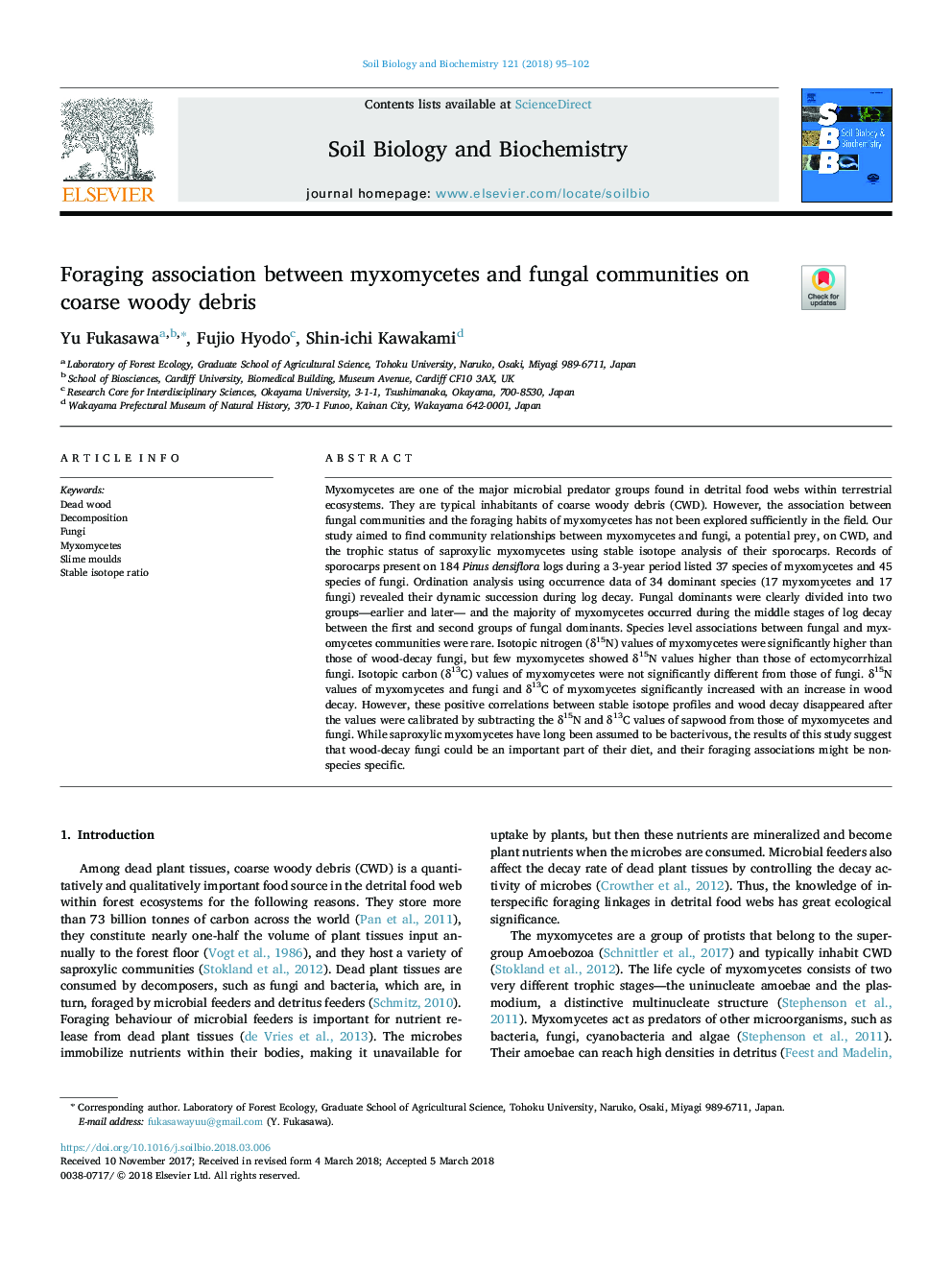| کد مقاله | کد نشریه | سال انتشار | مقاله انگلیسی | نسخه تمام متن |
|---|---|---|---|---|
| 8362769 | 1542563 | 2018 | 8 صفحه PDF | دانلود رایگان |
عنوان انگلیسی مقاله ISI
Foraging association between myxomycetes and fungal communities on coarse woody debris
دانلود مقاله + سفارش ترجمه
دانلود مقاله ISI انگلیسی
رایگان برای ایرانیان
کلمات کلیدی
موضوعات مرتبط
علوم زیستی و بیوفناوری
علوم کشاورزی و بیولوژیک
دانش خاک شناسی
پیش نمایش صفحه اول مقاله

چکیده انگلیسی
Myxomycetes are one of the major microbial predator groups found in detrital food webs within terrestrial ecosystems. They are typical inhabitants of coarse woody debris (CWD). However, the association between fungal communities and the foraging habits of myxomycetes has not been explored sufficiently in the field. Our study aimed to find community relationships between myxomycetes and fungi, a potential prey, on CWD, and the trophic status of saproxylic myxomycetes using stable isotope analysis of their sporocarps. Records of sporocarps present on 184 Pinus densiflora logs during a 3-year period listed 37 species of myxomycetes and 45 species of fungi. Ordination analysis using occurrence data of 34 dominant species (17 myxomycetes and 17 fungi) revealed their dynamic succession during log decay. Fungal dominants were clearly divided into two groups-earlier and later- and the majority of myxomycetes occurred during the middle stages of log decay between the first and second groups of fungal dominants. Species level associations between fungal and myxomycetes communities were rare. Isotopic nitrogen (δ15N) values of myxomycetes were significantly higher than those of wood-decay fungi, but few myxomycetes showed δ15N values higher than those of ectomycorrhizal fungi. Isotopic carbon (δ13C) values of myxomycetes were not significantly different from those of fungi. δ15N values of myxomycetes and fungi and δ13C of myxomycetes significantly increased with an increase in wood decay. However, these positive correlations between stable isotope profiles and wood decay disappeared after the values were calibrated by subtracting the δ15N and δ13C values of sapwood from those of myxomycetes and fungi. While saproxylic myxomycetes have long been assumed to be bacterivous, the results of this study suggest that wood-decay fungi could be an important part of their diet, and their foraging associations might be non-species specific.
ناشر
Database: Elsevier - ScienceDirect (ساینس دایرکت)
Journal: Soil Biology and Biochemistry - Volume 121, June 2018, Pages 95-102
Journal: Soil Biology and Biochemistry - Volume 121, June 2018, Pages 95-102
نویسندگان
Yu Fukasawa, Fujio Hyodo, Shin-ichi Kawakami,